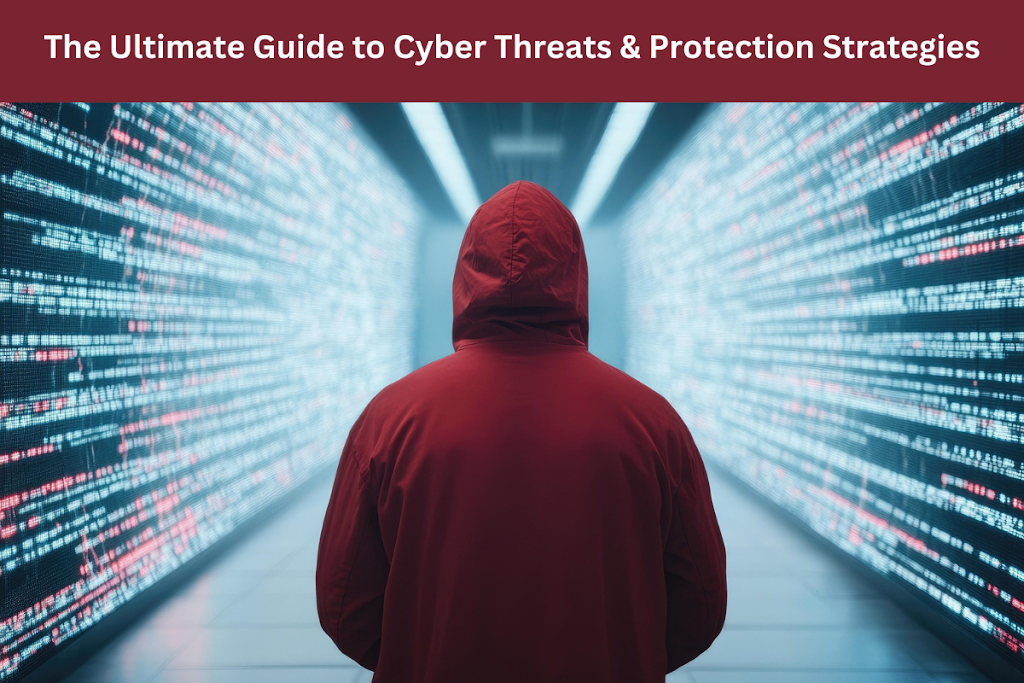The Ultimate Guide to Cyber Threats & Protection Strategies
Stay safe in the digital world with this ultimate guide to cyber threats and protection strategies. Learn about phishing, ransomware, DoS attacks, MitM threats, and zero-day exploits—plus get practical tips to strengthen your online security. Whether you’re an individual or a business, discover proven methods like strong password policies, employee training, data encryption, and network defense. Perfect for beginners and tech-savvy users alike, this guide helps you prevent cyberattacks, protect sensitive data, and stay ahead of evolving cybercriminal tactics.
In the ever-evolving digital era, cyber threats have become a daily challenge for individuals, businesses, and governments alike. As technology gets smarter, so do cybercriminals. From financial fraud to data breaches, the consequences of cyberattacks can be devastating. This comprehensive guide breaks down the most dangerous cyber threats and offers powerful strategies to protect yourself and your digital assets.
🚨 Common Cyber Threats You Need to Know
1. Phishing Scams
Phishing is a deceptive technique where attackers impersonate trusted sources to trick you into giving away confidential data like login credentials or credit card information.
🛡️ Protection Tips:
-
Never click on links or open attachments from unknown emails.
-
Cross-check email addresses and domain names before responding.
-
Use anti-phishing filters and trusted email security tools.
2. Malware & Ransomware
Malware refers to harmful software such as viruses, trojans, and worms. Ransomware, a more destructive type, locks your data and demands a ransom for its release.
🛡️ Protection Tips:
-
Install reliable antivirus and keep it updated.
-
Avoid downloading from unverified sources.
-
Keep all software and OS patches up to date.
3. Denial-of-Service (DoS/DDoS) Attacks
These attacks flood a network or website with traffic, causing it to crash or become unusable, affecting operations and user trust.
🛡️ Protection Tips:
-
Use firewalls and intrusion detection systems (IDS).
-
Deploy CDNs (Content Delivery Networks) for traffic management.
-
Implement rate-limiting to control incoming requests.
4. Man-in-the-Middle (MitM) Attacks
These occur when attackers secretly intercept and manipulate communication between two parties—especially dangerous on unsecured public networks.
🛡️ Protection Tips:
-
Avoid accessing sensitive accounts via public Wi-Fi.
-
Always use a VPN to secure data transmission.
-
Ensure websites use HTTPS for secure browsing.
5. Zero-Day Exploits
These attacks exploit unknown software vulnerabilities before developers release a fix. They are difficult to detect and highly destructive.
🛡️ Protection Tips:
-
Enable auto-updates on all systems and applications.
-
Use vulnerability management tools and patching solutions.
-
Invest in real-time threat detection technologies.
🔐 Proven Strategies for Cyber Defense
1. Create Strong Password Policies
Weak passwords are one of the easiest ways hackers gain access. Using strong, complex passwords is the first line of defense.
✅ Best Practices:
-
Use a mix of letters, numbers, and symbols.
-
Don’t reuse passwords across platforms.
-
Use a password manager and enable MFA (Multi-Factor Authentication).
2. Keep Systems Updated
Cybercriminals exploit outdated systems. Staying current with software updates can close security gaps before they’re targeted.
✅ Best Practices:
-
Enable automatic updates where possible.
-
Regularly install firmware and patch updates.
-
Perform system audits every quarter.
3. Cybersecurity Awareness Training
Employees are often the weakest link in cybersecurity. Educating them reduces the chances of successful phishing or social engineering attacks.
✅ Best Practices:
-
Schedule monthly awareness sessions.
-
Use phishing simulations to test readiness.
-
Create a culture of reporting suspicious behavior.
4. Data Encryption & Backup
Even if attackers access your systems, encryption ensures your data stays unreadable. Backups allow you to recover without paying a ransom.
✅ Best Practices:
-
Encrypt sensitive files both in transit and at rest.
-
Use encrypted cloud storage and secure backup protocols.
-
Store backups offline and test recovery regularly.
5. Network Security Enhancements
A strong network foundation helps block threats before they reach critical systems.
✅ Best Practices:
-
Set up advanced firewalls and endpoint protection.
-
Use network segmentation to isolate sensitive areas.
-
Implement intrusion prevention and detection systems.
🧠 Conclusion
Cyber threats are evolving faster than ever, but so are the defenses. By understanding these risks and taking smart, proactive steps, you can greatly reduce your exposure to cyberattacks. Whether you’re an individual user or a global organization, the key to digital safety is awareness, preparation, and consistent security hygiene.
Stay alert. Stay updated. Stay secure.






